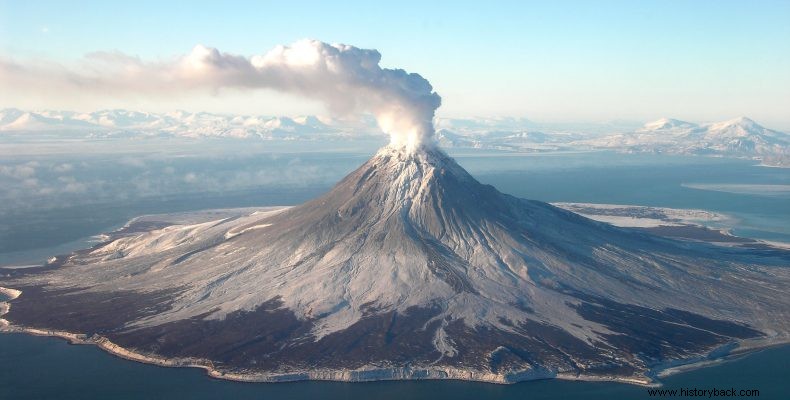
A large international team of scientists and historians from Europe and the US announced that they have found solid evidence for the origin of a hitherto unexplained extreme cold period in ancient Rome and neighboring areas, including Greece. The cause is considered to be the huge eruption of the Okmok volcano in the Aleutian Islands of Alaska on the other side of the Earth, which had the consequence of darkening, due to ash, the sky of the planet and the temperature dropping sharply.
Ancient written sources state that around the time of the assassination of Julius Caesar, in 44 BC, the Sun had disappeared from the sky and there was a period of unusually cold climate in Rome, accompanied by the destruction of agricultural crops, famine (there are reports and for Greece), diseases, as well as social and political unrest in the wider Mediterranean region. A combination of factors, which weakened democracy in Rome paving the way for empire, while a similar negative effect is believed to have occurred in the Ptolemaic Kingdom of Egypt.
There had long been suspicions that a volcanic eruption might have had a hand, but until now no specific volcano had been found to blame. Now researchers, led by Dr. Joe McConnell of the Desert Research Institute in Nevada, who published in the Journal of the National Academy of Sciences (PNAS), analyzed volcanic ash found in arctic ice cores in Greenland and Russia.
Geochemical analysis reveals an initial volcanic eruption in 45 BC. and a second stronger one in 43 BC, which left traces of ash for about two years afterwards. Thanks to the very northern location of the volcano, the ash particles could easily reach the stratosphere and spread throughout the northern hemisphere. Researchers believe they are now able to link the cold climate of the eastern Mediterranean 2,000 years ago to the Okmok eruption in 43 BC. It was one of the most powerful eruptions in the world in the last 2,500 years, which led to creation of a large caldera ten kilometers in diameter in the islands of Alaska.
"Finding evidence that a volcano on the other side of the Earth erupted and actually contributed to the downfall of the Romans and Egyptians is exciting. It certainly shows how interconnected the world was even 2,000 years ago," said McConnell. "The end of the Roman Republic occurred during these two years of extreme climate. It could be a coincidence, but it doesn't seem likely," he added.
The two years following the eruption in 43 BC were among the coldest in the Northern Hemisphere in the last 2,500 years, and the following decade is estimated to have been the fourth coldest. Climate models estimate that in the summers and autumns following the eruption, average temperatures in southern Europe and northern Africa were up to seven degrees Celsius below normal for the season. At the same time, rainfall in southeastern Europe in summer was 50% to 120% higher than usual, while in autumn it increased by up to 400%. "In the Mediterranean these wet and extremely cold conditions probably reduced agricultural yields and exacerbated feeding problems during the ongoing political unrest of the period," said archaeologist Andrew Wilson of the University of Oxford.
“Especially severe was the destruction due to the flooding of the Nile at the time of the eruption of Okmok, a period of famine and disease mentioned in the Egyptian sources. The climate impacts were a severe shock to an already stressed society at a pivotal moment in its history," said historian Joe Manning of Yale University. However, other scientists, according to "Science", show greater skepticism, considering that democracy in Rome was already on the decline long before the volcanic eruption. The death of Cicero in 42 BC. considered the symbolic end of Roman democracy.
SOURCE:APE-ME
